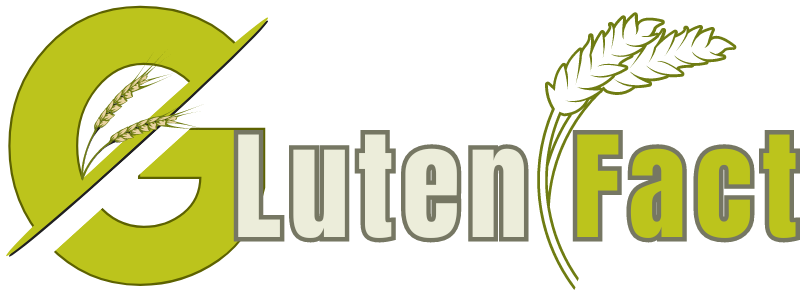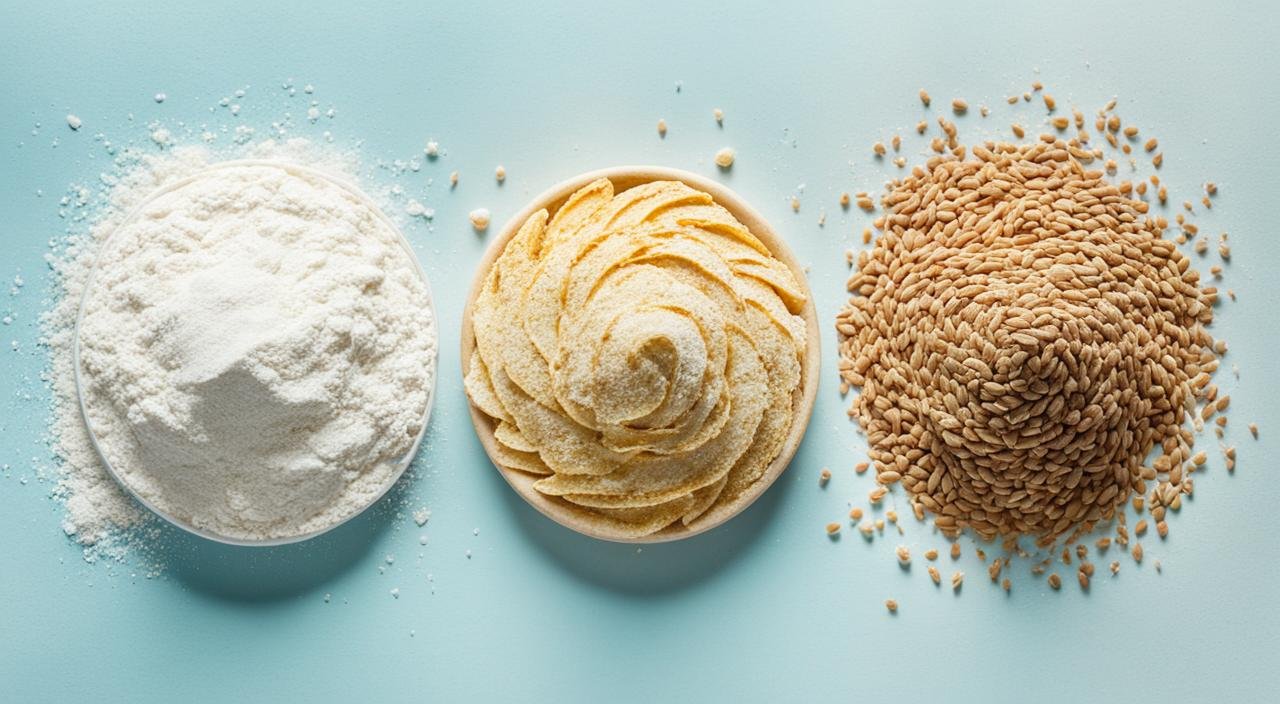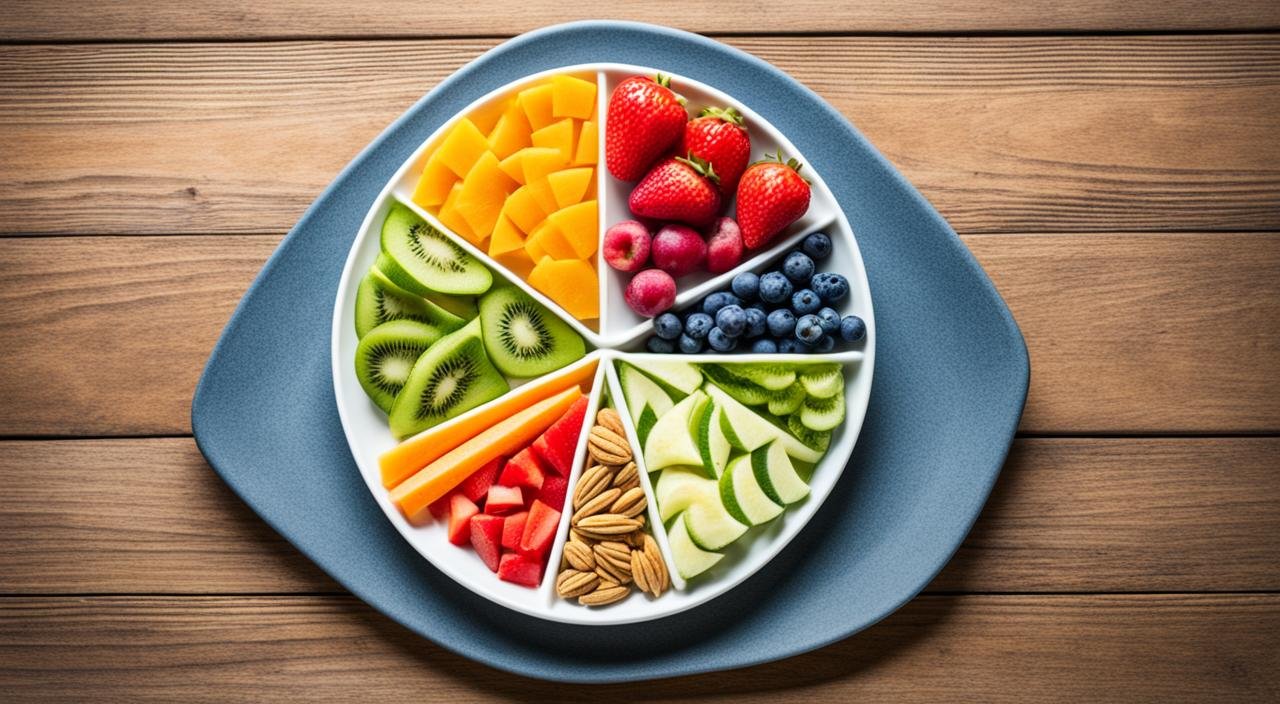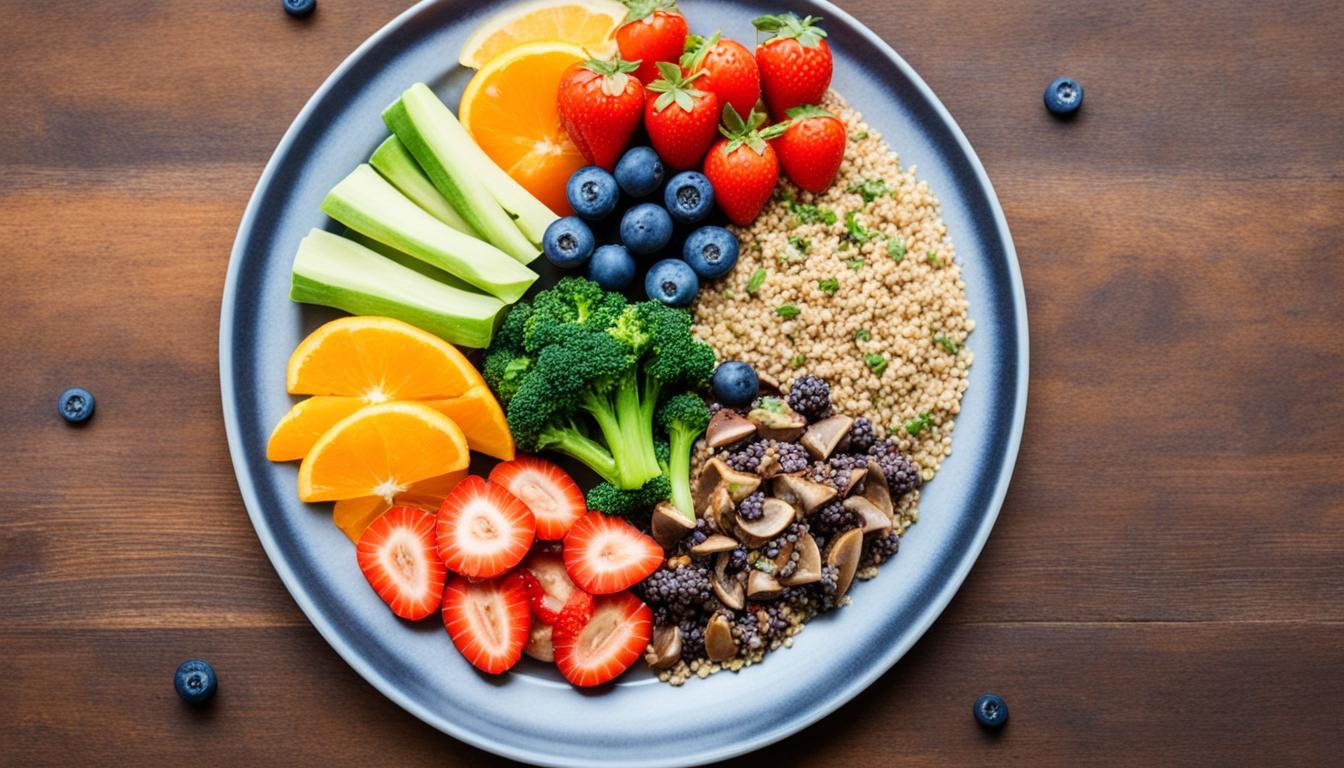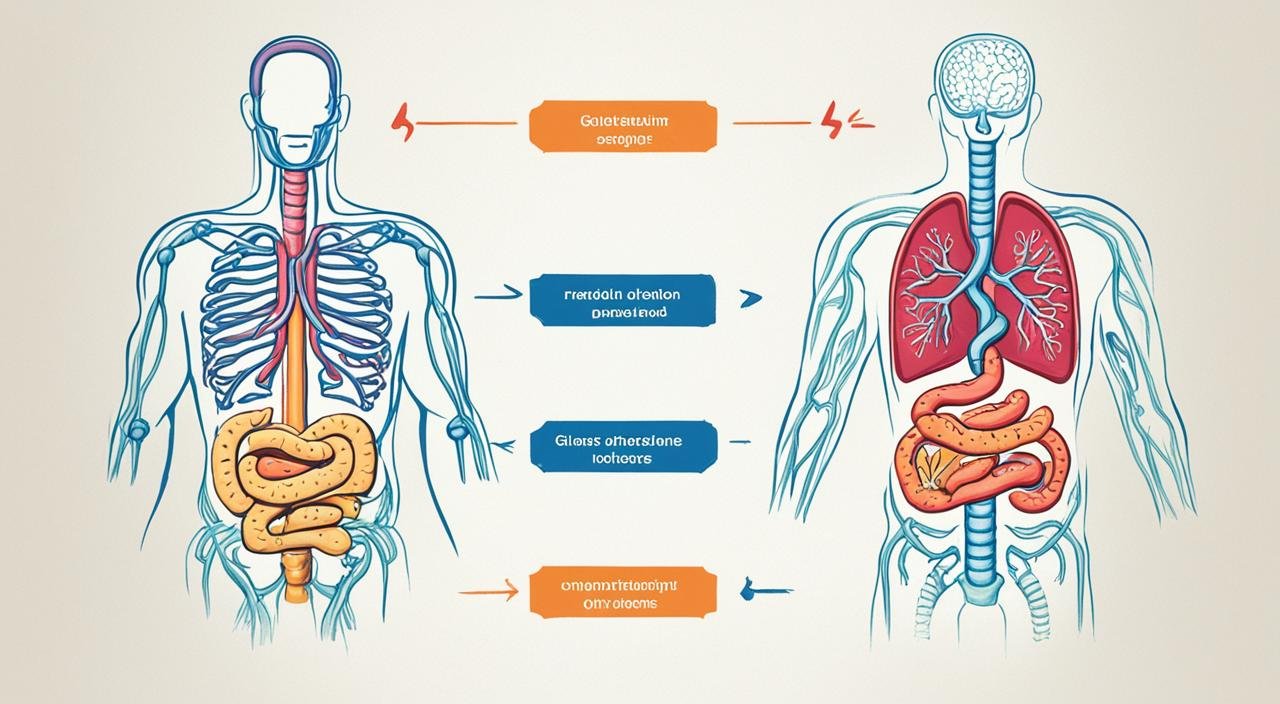Baking lovers, pay attention! Did you know high gluten flour has 12.5% to 14.5% protein? That’s a lot, says the U.S. Department of Agriculture (USDA). It’s a top choice for baking. But how does it compare to bread flour? Let’s look at the main differences between these two important flours.
Key Takeaways
- High gluten flour has more protein than bread flour, from 12.5% to 14.5%. Bread flour has 11.5% to 13.5% protein.
- Its high protein makes baked goods strong, chewy, and elastic.
- Use high gluten flour for breads, bagels, pizza crusts, and other chewy items.
- Bread flour is better for soft, tender items like sandwich loaves and dinner rolls.
- Knowing the differences helps you pick the right flour for your baking. It ensures your recipes turn out just right.
Understanding Gluten: The Secret Ingredient
Gluten is a group of proteins in wheat, rye, and barley. It makes baked goods have structure, texture, and chewiness. Let’s explore how gluten affects baking and its role in your recipes.
Gluten: A Family of Proteins
Gluten forms when glutenin and gliadin proteins mix with water and move. Glutenin gives dough its spring-back quality. Gliadin helps the dough stretch. The more gluten in flour, the more protein and strong dough you get, making baked goods chewier.
The Role of Gluten in Baking
Gluten is key in baking for the texture and structure of your food. Strong gluten is needed for bread to be elastic and rise. But, for soft baked goods like cakes, you want little gluten for a light texture.
| Flour Type | Protein Content | Gluten Development Potential |
|---|---|---|
| Cake Flour | 10% | Low |
| Bread Flour | 12.7% | High |
| All-Purpose Flour | 11.7% | Moderate |
| Whole Wheat Flour | 13.8% | High, but with interference from bran and germ |
Knowing how gluten works in baking is key for the right texture and structure. Whether you’re making bread, cakes, or pastries, understanding gluten can change everything.
High Gluten Flour Vs Bread Flour
Protein Content: The Key Difference
High gluten flour and bread flour are different because of their protein content. High gluten flour has 12.5-14.5% protein. Bread flour has 12-14%. This means high gluten flour has a stronger gluten network.
Gluten Strength and Elasticity
High gluten flour is great for chewy textures and strong structures. It’s perfect for bagels, pizza crusts, and artisan breads. Bread flour is better for soft items like croissants and rolls.
High gluten flour’s dough is stronger and more elastic. This helps the dough keep its shape and rise well. It also makes the final product chewy.
| Flour Type | Protein Content | Gluten Strength | Ideal Applications |
|---|---|---|---|
| High Gluten Flour | 12.5-14.5% | Higher | Bagels, pizza crusts, artisan breads |
| Bread Flour | 12-14% | Lower | Croissants, rolls, soft baked goods |
Knowing the differences between high gluten flour and bread helps bakers. They can pick the right flour for their recipes.
The Making of High Gluten Flour
To make high gluten flour, we mill the whole wheat grain. This keeps its high gluten content. Hard red spring wheat and hard red winter wheat are often used. They have lots of protein.
You can also add vital wheat gluten to all-purpose flour. This boosts its protein level. Mixing bread flour with vital wheat gluten makes a flour like high gluten flour, with about 14% protein.
- High-gluten flour contains a protein content of 14 to 15 percent, making it the highest among common types of flour.
- All-purpose flour has a protein content that averages at 9 to 12 percent.
- Bread flour has a protein content of 12 to 13 percent, falling between high-gluten and all-purpose flour in protein concentration.
- Whole wheat flour has a protein content of 14 percent, similar to high-gluten flour, but is less elastic and stretchable due to the bran content.
If you’re using all-purpose flour instead of high-gluten flour, add one more tablespoon for every cup needed. Mixing whole wheat flour with all-purpose flour can also help. This makes whole wheat flour work better as a high-gluten flour substitute.
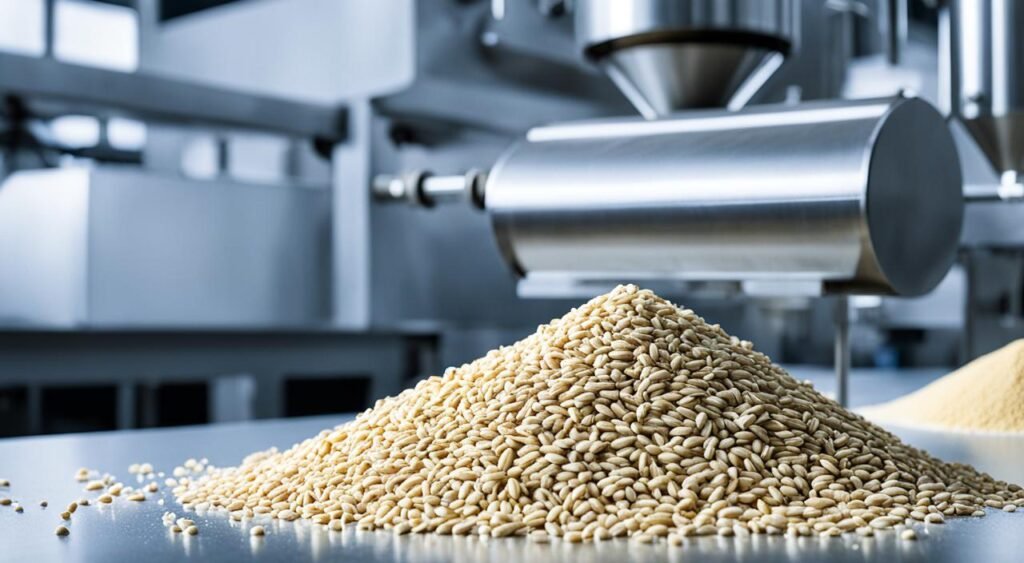
Bakeries often try different recipes to get the best bread. They adjust the protein levels in their recipes for the best results.
High Gluten Flour Vs Bread Flour: Baking Properties
Choosing between high gluten flour and bread flour changes how your baked goods turn out. High gluten flour has more protein and gluten. This means it holds more water and forms a strong gluten network. Your baked goods stay moist and have a chewy, structured crumb.
Moisture Retention and Structure
High gluten flour is great for making bagels, pizza crusts, artisan breads, and pretzels. It keeps these items chewy and holds their shape well. They don’t get too dense or crumbly.
- You’ll get one 22 oz loaf of Nature’s Own Perfectly Crafted White Bread
- Thick sliced artisan-style white bread with a flour-dusted crust
- Non-GMO Project Verified with no artificial preservatives, colors or flavors, and no high fructose corn syrup
Ideal Applications
Bread flour is better for soft baked goods like croissants, rolls, and sweet yeast doughs. It has less gluten, making these items tender and delicate. This is perfect for their texture.
“The higher protein and gluten content of high gluten flour allows it to absorb more water and create a stronger gluten network, resulting in baked goods that retain more moisture and have a chewier, more structured crumb.”
Knowing the difference between high gluten flour and bread flour is key. It helps you get the right texture and structure in your baked goods, whether they’re artisan breads or soft baked goods.
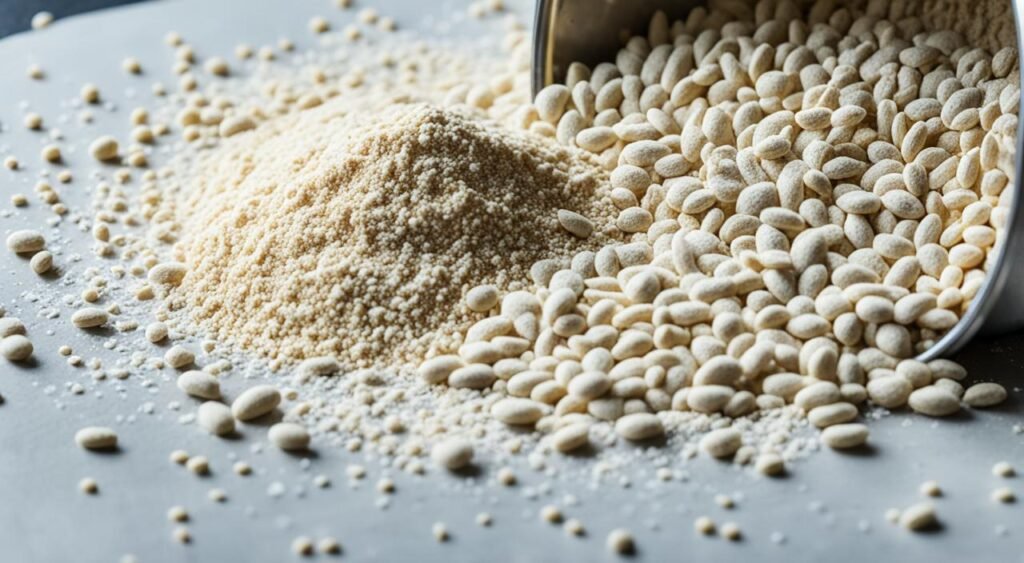
While bread flour creates tender textures perfect for donuts and pastries, it’s worth noting that traditional donut recipes aren’t suitable for those avoiding gluten. If you’re curious about gluten-free options at popular chains, you might wonder are Krispy Kreme donuts gluten-free? – understanding these alternatives can help you make informed choices whether you’re baking at home or dining out.
Conclusion
We looked into the differences between high gluten flour and bread flour. We found out what makes them special. The main difference is in their protein levels. This affects how strong and stretchy the dough can be.
High gluten flour has 12.5-14.5% protein. It’s great for making chewy, structured foods like bagels and pizza crusts. Bread flour, with 12-14% protein, is better for soft treats like croissants and rolls.
Knowing about high gluten and bread flour helps us pick the right one for our baking. This way, we can make sure our baked goods turn out just right. With this knowledge, we can improve our baking and make amazing treats.
FAQ
What is the main difference between high gluten flour and bread flour?
High gluten flour and bread flour differ in their protein levels. High gluten flour has 12.5-14.5% protein. Bread flour has 12-14% protein.
How does the protein content affect the gluten strength and baking properties?
High gluten flour has more protein, making its gluten network stronger. This leads to a chewier texture and better structure. It’s perfect for bagels, pizza crusts, and artisan breads.
How is high gluten flour different from all-purpose flour?
High gluten flour keeps the whole wheat grain’s gluten content. All-purpose flour blends different wheat types with less protein. You can also make high gluten flour at home by adding vital wheat gluten to all-purpose flour.
When should you use high gluten flour vs. bread flour in baking?
Use high gluten flour for chewy, structured baked goods like bagels and pizza crusts. Bread flour is better for soft items like croissants and rolls.
How does the higher protein and gluten content of high gluten flour affect the final baked product?
High gluten flour’s high protein and gluten make it absorb more water. This creates a stronger gluten network. The result is baked goods that stay moist and have a chewy, structured crumb.
